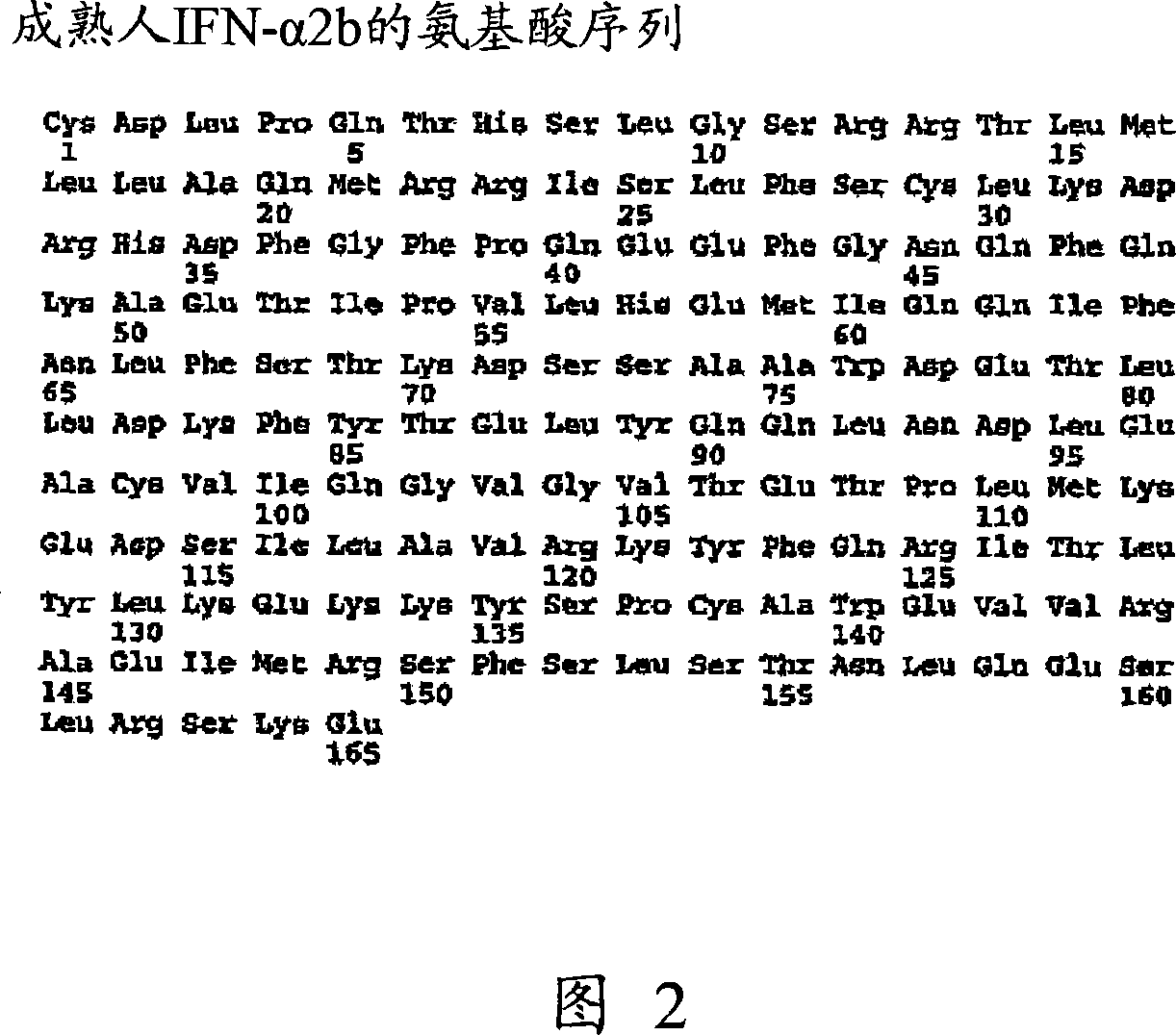Synthetic hyperglycosylated, and hyperglycosylated protease-resistant polypeptide variants, oral formulations and methods of using the same
An anti-protease and glycosylation technology, applied in the field of protein therapeutics, can solve problems such as destruction
- Summary
- Abstract
- Description
- Claims
- Application Information
AI Technical Summary
Problems solved by technology
Method used
Image
Examples
Embodiment 1
[1397] Example 1 : Construction of a hybrid type I interferon receptor agonist with unnatural glycosylation sites
[1398] Among type I interferons, two interferon alpha subtypes (IFN-α2b and 14), IFN-β1 and IFN-ω1 are naturally glycosylated in mammalian cells (Figure 24). Figure 24 provides a comparison of the amino acid sequence of the amino acid sequences of Infergen (SEQ ID NO: **) and type I interferon species (SEQ ID NOs: **_**), which have their natural sugars Jihua’s report. The amino acid residues where glycosylation occurs are marked with a thick box. Asparagine residues are N-linked glycosylation anchor sites, and threonine residues are O-linked glycosylation anchor sites. Most of the sequences are shown above (SEQ ID NO: **).
[1399] Based on the high degree of amino acid sequence identity between Infergen and other type I interferons, based on the amino acid sequence alignment between Infergen and naturally glycosylated type I interferons, a glycosylation site was ...
Embodiment 2
[1409] Example 2 : Design, construction, expression and glycosylation site generation of fusion constructs of mammalian Infergen and other type I interferon signal peptides.
[1410] Materials and methods
[1411] Construction of Fusion Gene
[1412] The amino acid alignment of Infergen and an exemplary Infergen fusion protein and human Infergen α14 and β are shown in FIG. 30. In order to synthesize a fusion gene for a predetermined fusion protein, a two-step polymerase chain reaction strategy was designed. The primers used in the PCR reaction are listed in Table 12 below:
[1413] Table 12
[1414] Primer name
Sequence (5′ to 3′)
IFNa14_Inner
GCCCFGGTGGTGCTGAGCTGCAAGAGCAGC-
TGCAGCCTGGGCTGCGACCTGCCCCAGACCCACAGC (SEQ ID
NO:1350)
IFNa14_Outer
TATAAAGCTTGCCACCATGGCCCTGCCCTTC-
GCCCTGATGATGGCCCTGGTGGTGCTTGAGCTGCAAG (SEQ ID
NO:1351)
IFNb_Inner
GCCCTGCTGCTGTGCTTCAGCACCACCGCCC-
TGAGCATGAGCTGCGACCTGCCCCAGACCCACAGC (SEQ ID...
PUM
| Property | Measurement | Unit |
|---|---|---|
| molecular weight | aaaaa | aaaaa |
| molecular weight | aaaaa | aaaaa |
Abstract
Description
Claims
Application Information
 Login to View More
Login to View More - R&D
- Intellectual Property
- Life Sciences
- Materials
- Tech Scout
- Unparalleled Data Quality
- Higher Quality Content
- 60% Fewer Hallucinations
Browse by: Latest US Patents, China's latest patents, Technical Efficacy Thesaurus, Application Domain, Technology Topic, Popular Technical Reports.
© 2025 PatSnap. All rights reserved.Legal|Privacy policy|Modern Slavery Act Transparency Statement|Sitemap|About US| Contact US: help@patsnap.com



